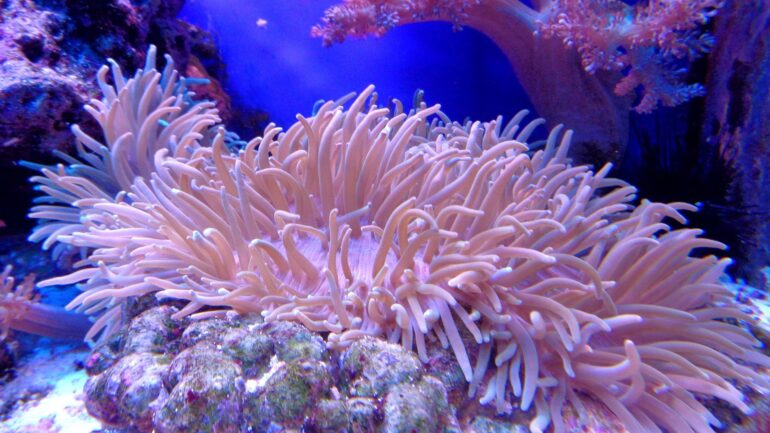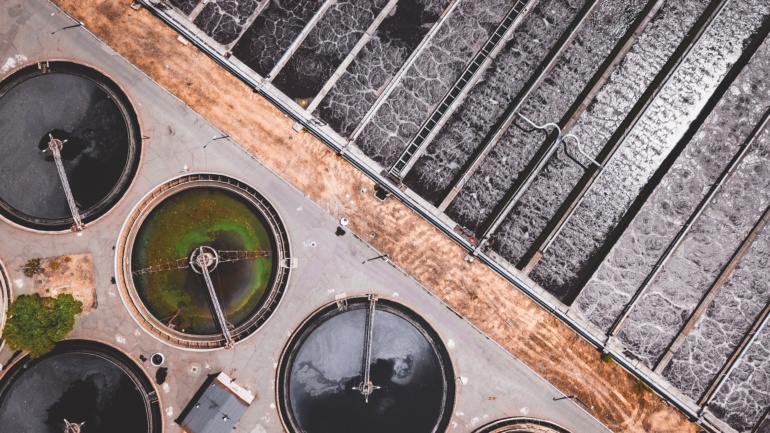Source (no endorsement)
By Matthew Taylor, Associate Researcher & Writer for Save The Water™ | June 30, 2021
Municipal water treatment systems are some of the unsung heroes in our lives. Without them, those of us who live in cities would not have clean water flowing directly to the taps in our homes. Most people, however, never think about the processes water treatment systems must use to get water to the public. So, how do municipal water treatment systems work?
Most municipal water treatment systems are unique to the area they serve. In one place, the water treatment system could operate differently than one in the town five miles down the road. Most, however, have a few steps in common.
Coagulation
One of the first stages in the municipal water treatment system is coagulation. A chemical with a positive electrical charge, like alum, is essential for this step. This chemical, known as a coagulant, neutralizes the negative charges that water contaminants have. The coagulant thus serves to bring individual contaminant particles together in larger groups.
Flocculation
Once the coagulant goes into the water, the water is slowly mixed. Mixing encourages the coagulant to spread evenly in the water. The coagulant clumps neutralized contaminant particles together in larger clusters, known as floc.
Sedimentation
The mixture of water and floc goes to a sedimentation tank, also known as a clarifier, to remove the floc from the water. The floc is heavier than the water, allowing it to settle to the bottom of the tank because of gravity. The particles at the bottom of the tank are known as sediment and can now be removed. Filters may also remove the floc from the sedimentation tank instead of gravity.
Filtration
After removing the sediment from the water, the water goes through a series of filters. Different materials, such as charcoal, sand, and gravel, make up these filters. The materials in the filters are of various sizes, so the size of the spaces between them, known as pores, are different as well. The difference in pore size removes contaminants of varying sizes from the water, such as dust or chemicals.
Disinfection
Ultraviolet light or a disinfectant such as chlorine treats the filtered water. Disinfection also kills microbes such as bacteria or viruses. After this step, the water should be safe to drink since most of the contaminants that were in the water should be gone. The amount and concentration of disinfectants added to the water are carefully controlled to remove contaminants while still allowing the water to be safely consumed.
Fluoridation
Many municipalities, especially in North America, add fluoride to drinking water to prevent tooth decay. The fluoride makes tooth enamel stronger.
Storage and Distribution
The water is now clean enough to drink and goes to storage tanks before consumers use it. Distribution systems consist of storage tanks, pipes, and pumps that help get the water to nearby communities.
Alternative Water Treatment Systems
The processes covered above are some of the most common steps municipal water treatment systems use to prepare water for the public’s consumption. Water treatment systems can modify these procedures as needed. For example, one method involves the use of filters to remove sediment from the water instead of gravity in the sedimentation tank.
It is important to remember that different areas need customized water treatment systems. Sometimes, the “traditional” steps of municipal water treatment aren’t suited to a particular site. In addition, various factors may make traditional water treatment methods undesirable to use, such as water volume, cost, location, or other reasons.
While typical water treatment systems don’t work for certain areas, there are other water treatment systems available. These systems include some that Save the WaterTM, an organization dedicated to clean and healthy drinking water for all, has developed.
FloNoxTM
FloNoxTM is one of the proprietary water treatment technologies developed by Save the WaterTM, and you can learn more about it on our website. This technology can treat even the most contaminated water, such as floodwater and drinking water. It combines two of Save the Water’sTM other proprietary water treatment technologies: eFlocTM and eNoxTM, and together they can provide clean water where it was previously unusable.
eFlocTM removes contaminants such as perfluorooctanesulfonic acid (PFOS), pollutants, and other inorganics. It discharges a non-toxic sludge-cake, which is waste, as well as water. eNoxTM, meanwhile, uses ultraviolet technology to remove organic contaminants such as toluene from the water. This system discharges carbon dioxide and clean drinking water.
Bottom Line
Many municipal water treatment systems around the world follow the same processes: coagulation, flocculation, sedimentation, filtration, disinfection, fluoridation, and storage and distribution. Individual water treatment systems can customize equipment, chemicals, and processes in these steps. Sometimes, these steps aren’t suitable to treat water for various reasons, so we need other kinds of water treatment systems.
In general, municipal water treatment systems do a lot of work to serve their communities that often goes unappreciated. Check out the Save the WaterTM website to learn more about water and water conservation!





